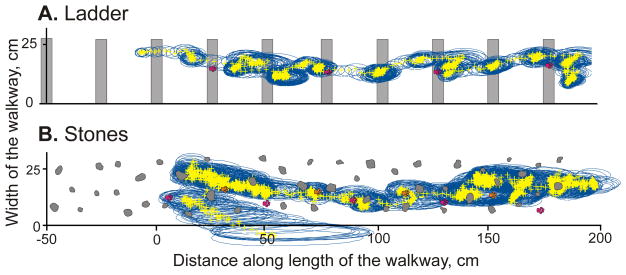Figure 10.
Representative examples of gaze intersect with walking surface during ladder (A) and stones (B) locomotor tasks, a “bird’s-eye view”. The record in A is a “bird’s-eye view” representation of a trial shown in Figure 9C, and record in B is a “bird’s-eye view” representation of a trial shown in Figure 9D. The position and dimensions of crosspieces of the ladder and stones are to scale and are marked in gray. Crosses indicate position of the calculated center of gaze every 5 ms, and blue circles show the surface area that projected onto the retina’s area centralis. The paw placement locations are shown for the right (pink; in A and B) and left (orange; in B only) forelimbs. See also supplemental Video 2, which shows movement of cat’s gaze along the surface of the ladder, movement of the head (the center of the left eye) in the corridor, and movement of the right paw from one crosspiece of the ladder to another one during the trial that is shown here in A and also in Figure 9C.

